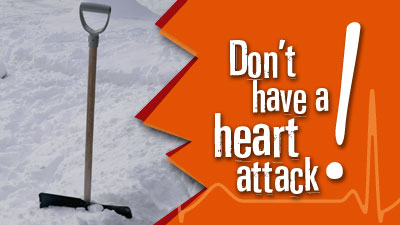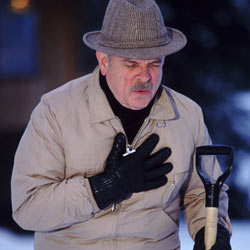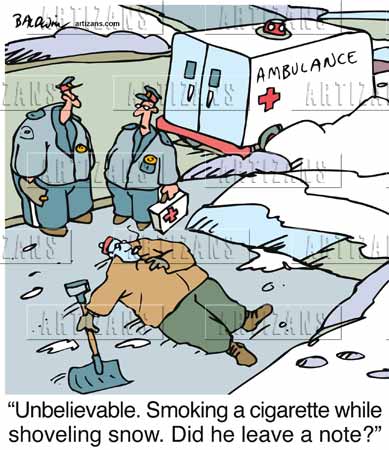You have probably heard it said, but you’d be surprised to know how often people hurt themselves shoveling snow. Of course, this time of year, people are doing many more strenuous activities than just shoveling snow. There’s walking (through mounds of snow), skiing, cross-county skiing, snow boarding, football in the cold, pushing cars that are stuck, scraping ice off the car and many other activities.
Is this really such a big deal? The important consideration is that you exert a lot of energy doing these activities. If your heart, back or overall health isn’t prepared to handle them, you can suffer debilitating consequences. Would you believe that every year over 11,000 people visit emergency rooms for back injuries related to shoveling snow?
Let’s address this in a way that is easy to understand. Shoveling snow can be even more vigorous than a full aerobic workout. It involves utilization and straining many muscles not often used by many people. It can lead to several ailments, ranging from strains and sprains to a herniated disk or a heart attack. Thus, if you’re going to do it smartly, certain rules should apply.
Understand your risks. These winter activities I mentioned pose higher risks in the following groups, including an advanced rate of having a heart attack.
- Individuals leading a sedentary lifestyle
- Individuals having had a prior heart attack
- Individuals with known heart disease
- Individuals with high blood pressure or high cholesterol
- Smokers
Here are some quick tips to lower your risk while shoveling:
- Discuss your risk level with your doctor.
- Wait until the snow has stopped falling.
- Stretch and walk for a few minutes before starting. This will loosen and warm up your muscles.
- Avoid eating, having sex, exercising or other strenuous activity for at least 30 minutes before shoveling, as your blood (and needed oxygen) will be diverted away from your heart. This is the basis of many heart attacks.
- Avoid coffee or smoking for at least one hour before or one hour after shoveling or during breaks. These stimulants increase your heart rate and blood pressure, increasing the level of work your heart does and your heart attack risk.
- Drink water before and after shoveling.
- Dress warmly; cover your head, mouth and neck. Hypothermia and frostbite are serious issues.
- Wear shoes that will prevent you from slipping and falling. Strains, sprains, and broken bones are one faulty step away in many instances.
- Your equipment matters. Use a shovel with a bent handle. This angling will relieve the pressure on your back. Use a smaller shovel. It may take longer, but the lowered risk is worth it.
- Push snow; try not to lift. If you have to lift, use your knees to take some pressure off your back.
- Take your time and take breaks. If your body doesn’t feel right, stop.
Most importantly, KNOW WHEN TO STOP.
Do you know the warning signs of a heart attack? Be quick to seek medical attention if you feel out of sorts.
If you live in certain climates, winter chores are unavoidable. Arm yourself and your loved ones with these precautions. Your Sterling Medical Advice expert consultants are certainly available to answer any questions you have on this topic or when the need arises.
Feel free to ask your SMA expert consultant any questions you may have on this topic.
Order your copy of Dr. Sterling’s new book Behind The Curtain: A Peek at Life from within the ER at jeffreysterlingbooks.com, iTunes, Amazon, Barnes and Nobles and wherever books are sold.
Thanks for liking and following Straight, No Chaser! This public service provides a sample of what http://www.SterlingMedicalAdvice.com (SMA) and 844-SMA-TALK offers. Please share our page with your friends on WordPress, like us on Facebook @ SterlingMedicalAdvice.com and follow us on Twitter at @asksterlingmd.
Copyright © 2017 · Sterling Initiatives, LLC · Powered by WordPress




